Went to Shaoxing yesterday – had a great time discovering more of China.
Shaoxing lies in between Ningbo and Hangzhou, south of the Yangze Delta. It is famous for being the home town of the writer Lu Xun – it is his house and gardens which I went to see today. Lu Xun lived from 1881 – 1936 and is know as the father of modern Chinese literature. Shaoxing, as a city itself, is also interesting due to its rapidly developing textile industry; particularly silk seems to be very good here – apparently of very high quality.
Â
So got up at around 6.30am to catch the bus at 8am, and it took us about one hour to get to Shaoxing. Lu Xun’s house is situated in what appeared to be the old part of town which has lovely old Chinese houses with pagoda roofs. The whole area is surrounded by a small canal.
Â
Â
Lu Xun’s house itself, like many of the old houses and temples in China, is a little like a pearl necklace in that every individual part of the house is separated by a small courtyard or an alley, so that you walk from pearl to pearl via small pieces of string and discover something new at the end of each. I particularly liked the paintings on the oven in his kitchen (especially the dumplings, the fish and the crab, on the side and the front, respectively) and I also found his sleeping quarters rather charming. The garden had a great big vegetable patch in it, as well as a bonsai area, with maybe 50 bonsai. There was also an outdoor opera stage, where Lu Xun would have his poems and short stories come to life through performances.
Â
Â
After lunch we went to a garden, which had the most beautiful magnolia (Magnolia soulangiana) trees. I thought that they looked particularly spectacular next to the dark house with the red paper lanterns. The magnificent white cups were elegantly floating in the air – it really looked very dramatic.
Â
Â
Â
The garden also had many quince trees in bloom (Chaenomeles cathayensis) and some nice temples, however, as always, the bamboo, with its architectural stems and foliage stood out for me. For those of you who are interested in gardens: Chinese gardens are nothing like English gardens. There are no herbaceous borders, straight lines, clipped hedges, focal points at the end of a paths and no symmetric alignments of flower beds and vegetable patches. Chinese gardens are fluid, contain many bridges, ponds, small rivers, pagodas and plenty of big rocks. For someone looking for the beauty ideal of an English garden, this style of horticulture and garden design can seem quite alien, but once you understand what the different elements signify and accept that the lines are fluid rather than ridged and strong, then you will find beauty even in the big rocks and the tranquility and simplicity which emanates from these gardens. Particularly the sound of water adds to the whole atmosphere. Â
Â
Finally, after a long day, we went to our last stop – East Lake. I really can not pretend that there was anything worthwhile me reporting about this part of the trip – East Lake seemed to be one more building site in China’s race to renovate and modernise. The picturesque old had been stripped down to be replaced with new, concrete bridges and features, lacking completely in interest. However I did take a few minutes to sit down watch the rowers in their boats having their dinner; my day of Chinese tourism was over.
Â
Â
Â
Â
Â
One Response to “Shaoxing”
Leave a Reply
You must be logged in to post a comment.
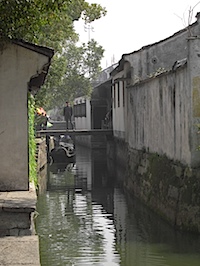


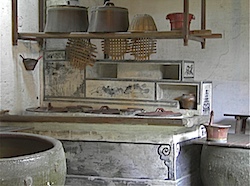
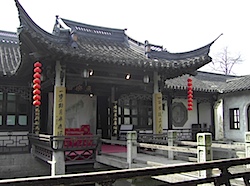
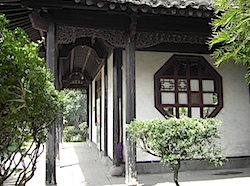



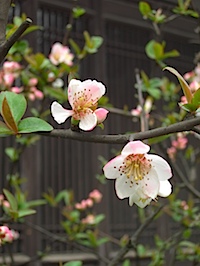
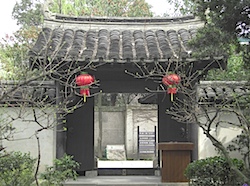


Wonderful Frauke…so many sights for inspiration….take care, MAMPA